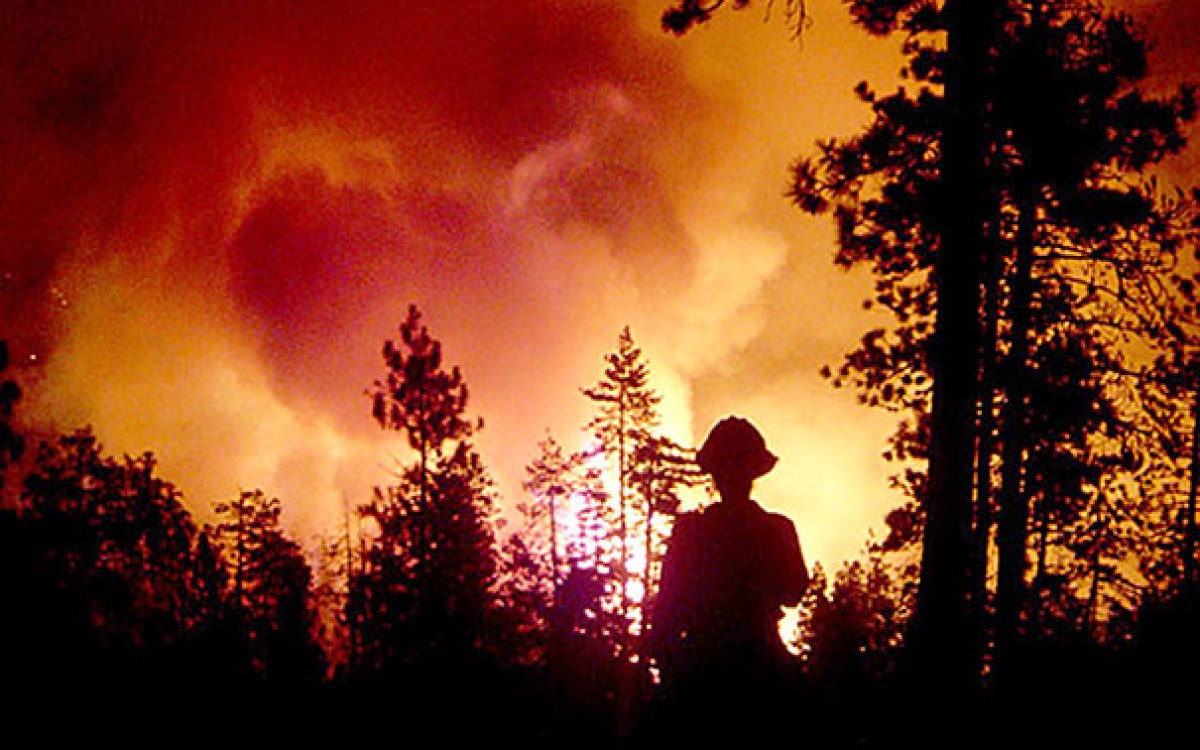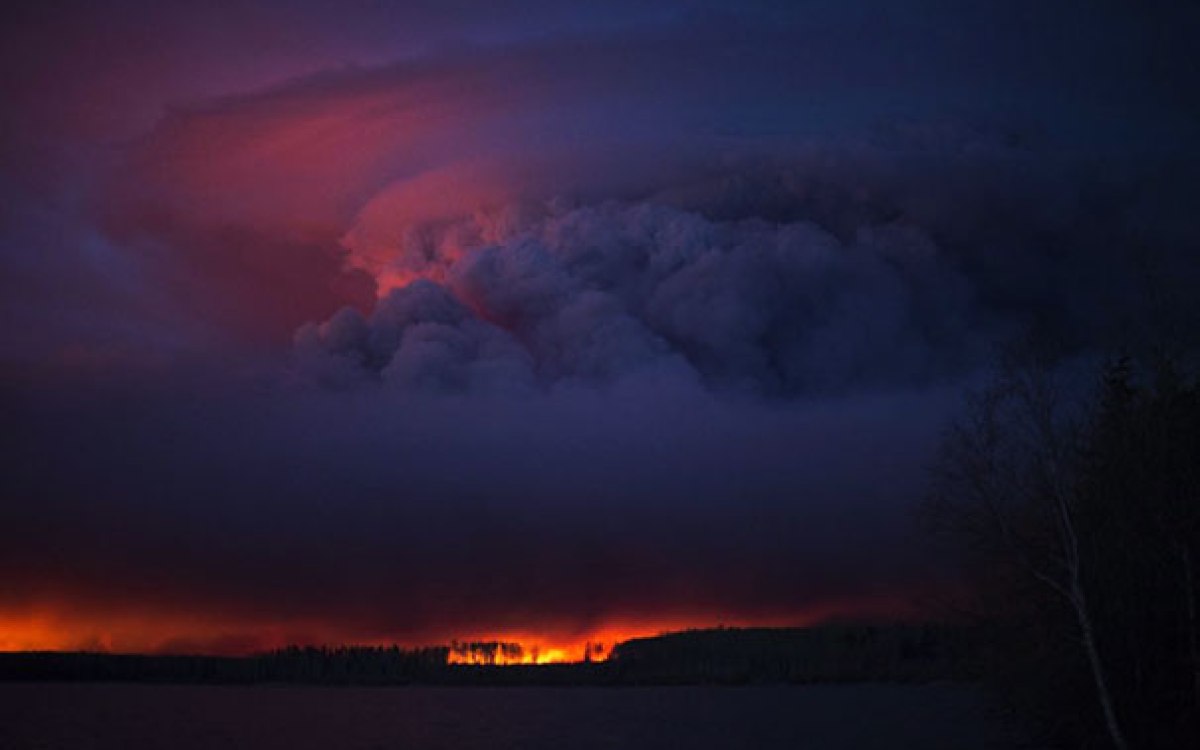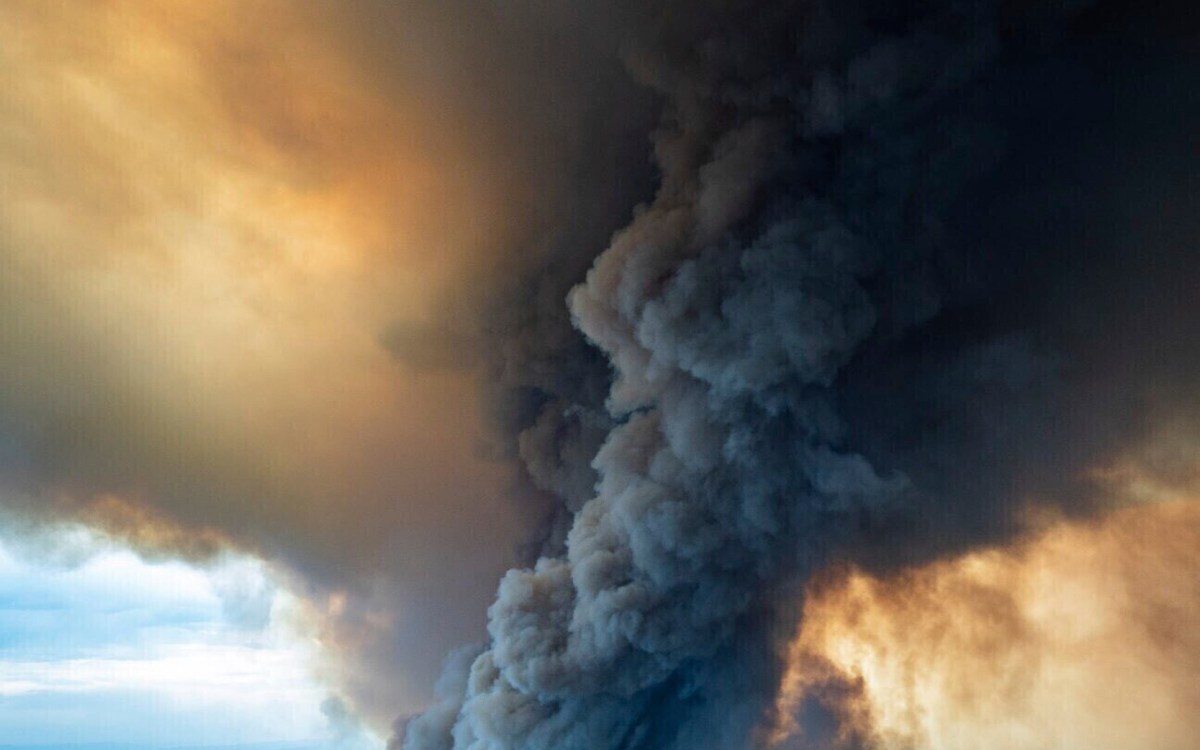In the thick of it
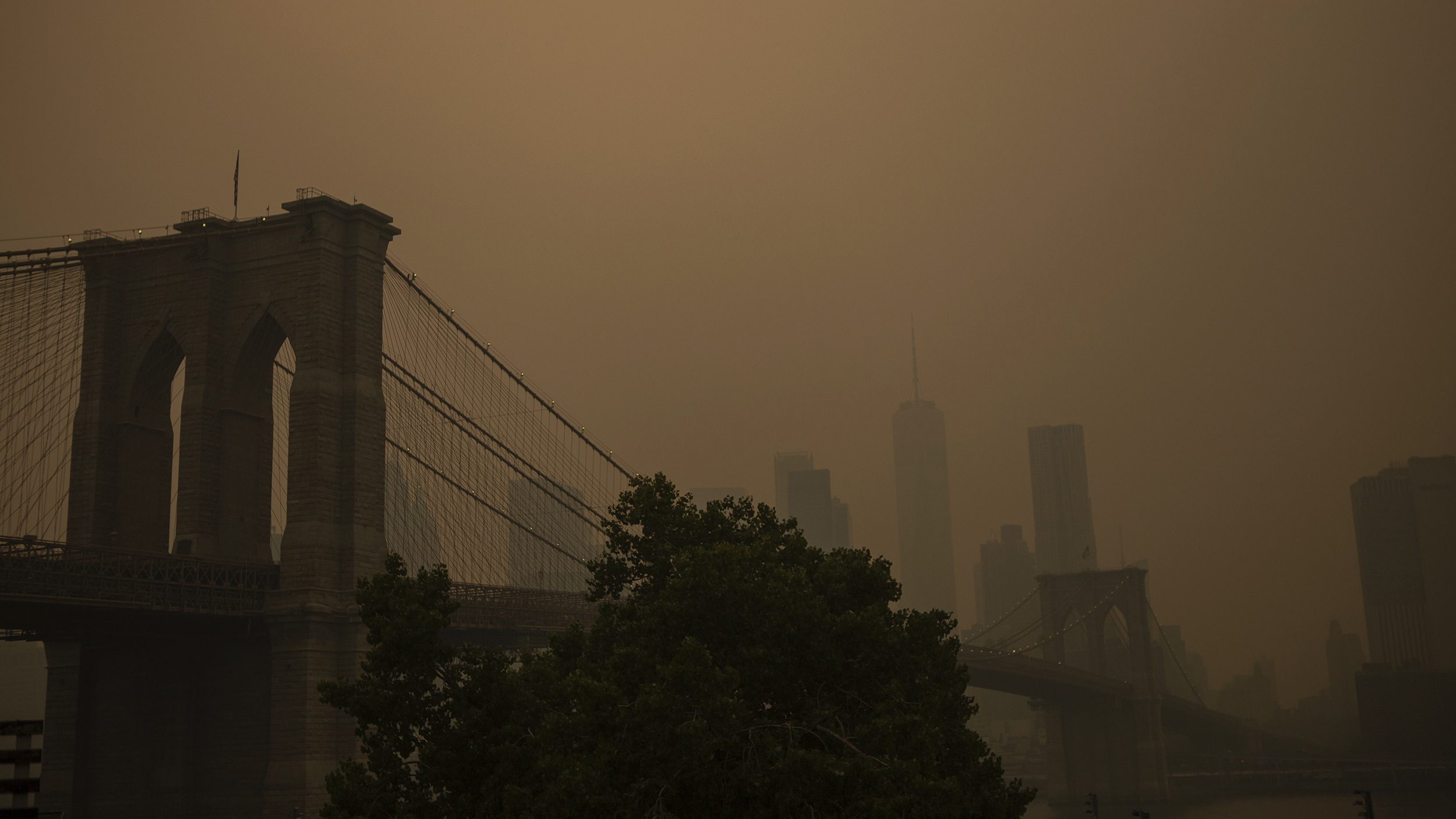
Smoke from Canadian wildfires earlier this month shrouded New York City’s skyline in an orange haze.
Via AP
Scenes of smoke-blanketed Northeast likely to repeat, one expert says. Another offers advice for reducing harm to health.
The dense smoke that has led to air quality alerts across the U.S. Northeast the past week provides a view of a climate-changed future where Quebec’s wildfires burn twice as much land and the wind carries the toxic effects south, scientists say. But there are steps we can take to mitigate the harm.
In research published in 2015, Loretta Mickley, a wildfire expert and senior research fellow at the John A. Paulson School of Engineering and Applied Sciences, worked with colleagues to project the spread of Canadian wildfires in a warming world. They found that forest burn in Quebec — directly north of New York and New England — will likely double by 2050.
That’s troubling, Mickley said, because what is so unusual about the current Quebec fire season is not the number of fires — some 400 were burning when the densest smoke headed south — but the area of forest. Ten times the acreage has burned across Canada compared with the same time a year ago, Mickley said. That’s 11 times the 10-year average.
“I am surprised,” Mickley said of recent scenes from New York and other cities, “but this is within my expectations of what fires will be like in a warming climate.”
The mechanism for fire danger is straightforward, with higher temperatures drying out forests until a spark sets them ablaze. This year, eastern Canada saw an early season heat wave that increased wildfire fuel. Once the forests were burning, all it took was the right weather pattern to push the smoke south.
“There have been times in the past where fire activity was more or less frequent, depending on hemispheric climate at that time, but we are pushing the envelope on the past and moving into a new regime,” Mickley said.
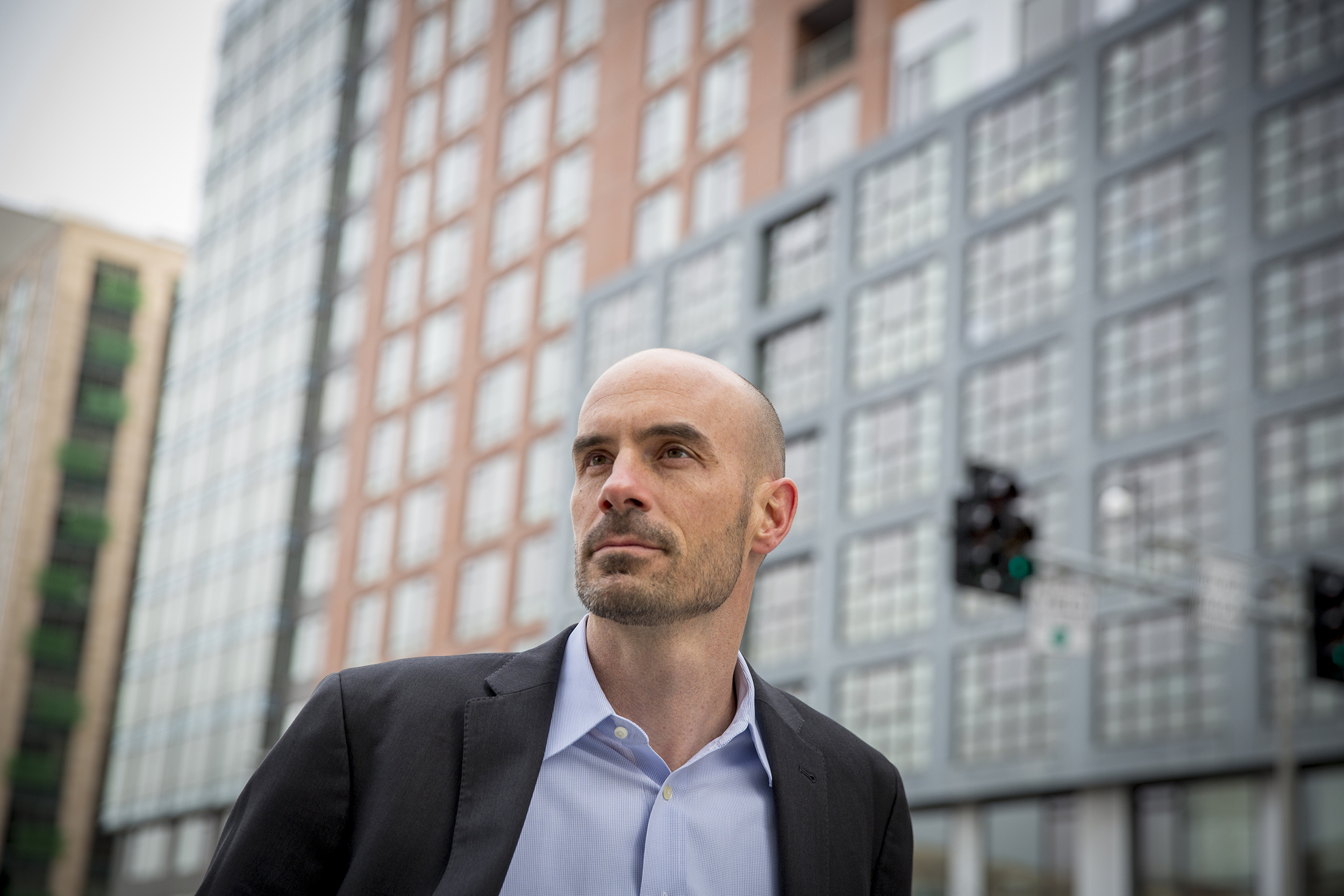

Air quality scholar Joe Allen and wildfire expert Loretta Mickley.
Harvard file photo; photo by Eliza Grinnell
For cities in the Northeastern U.S., large fires across Quebec are particularly hazardous because they’re near enough that smoke will be transported close to the ground — and close to people — rather than high in the atmosphere, as when western wildfires send east a haze that filters sunlight and creates dramatic sunsets.
In 2016, Mickley teamed with Francesca Dominici, the Clarence James Gamble Professor of Biostatistics, Population and Data Science at the Harvard T.H. Chan School of Public Health, and colleagues at Yale to publish a study finding that hundreds of counties across the West will likely experience greater effects from wildfire smoke in the coming decades. They coined a new term, “smoke wave,” to describe the phenomenon, which Mickley said applies to what the Northeast experienced last week.
A “smoke wave” is defined as two or more consecutive days of extreme levels of fine particles, called PM2.5, emitted specifically by wildfires. Fine particles are thought to be especially dangerous because they’re tiny enough — about 30 times smaller than the width of a human hair — to penetrate deep in the lungs and even cross into the bloodstream.
Powerful protective measures exist, notes Joe Allen, an associate professor of exposure assessment science at the Chan School. Using a high-quality mask like an N95 can help, as can limiting time outdoors and avoiding strenuous activity, he said. However, those steps alone aren’t enough because outdoor pollution penetrates indoors.
Portable air purifiers can clear the air inside homes, Allen said. In office buildings, pandemic-era HVAC filtration upgrades should also protect against wildfire smoke. In fact, Allen’s research team monitors air quality in many buildings on the East Coast and, despite outdoor levels of PM2.5 higher than 200 micrograms per cubic meter in the past week, they saw levels below 10 micrograms per cubic meter inside buildings with upgraded filtration.
“A key point to keep in mind is that even though levels are lower indoors, because we spend so much more time indoors, most of the outdoor air pollution people breathe can happen indoors,” Allen said. “It’s really important for people to know that these are not hard or expensive solutions.”
As far as tracking tools, Allen gave high marks to the federal government’s six-grade Air Quality Index, which dates to the 1960s but has gained more prominence in the past week. Allen said the index, which rates air quality from green for good to maroon for hazardous, is particularly helpful because it simplifies complex variables that change from pollutant to pollutant, and links them to physiological impacts.
The information is vital because the consequences of pollution exposure can be so wide-ranging and severe.
“We see health effects from short-term exposure to levels 10 times lower than what we saw in New York City,” Allen said. “Beyond the well-known lung and heart health effects, my team just published a study of indoor PM2.5 exposure and simultaneously measured cognitive function of office workers around the world. We saw a decrease in performance when PM2.5 levels increased.”



